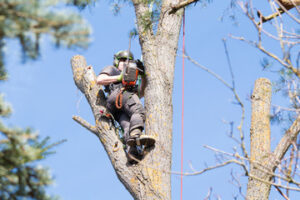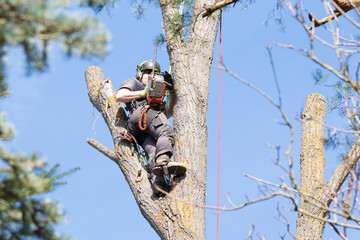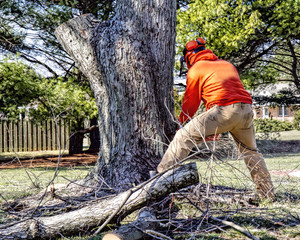Tree services utilize arboricultural techniques such as pruning, cutting, and trimming on the built environment. Forested land, park and garden, shrubbery, and street verge are all at the core of attention to the arboricultural services industry.

Tree service employs a team of arboriculturists qualified to identify the right type of tree to suit various situations. A tree service representative will work with a landscape contractor to develop a plan for the tree’s maintenance and planting needs. Many trees are used to provide aesthetic purposes, but it is important to remember that the most common trees are evergreens. Trees such as maple and oak provide shade from the sun and serve as an attractive accent piece to any garden, lawn, or yard. Foliage trees such as poinsettias provide shade and beautify the garden area, and flowering plants such as garden roses are also used for decorative purposes.
One of the most popular tree services today is landscape mulching. This process involves covering a ground surface with material that will keep the grass seed from growing. This method can be used to cover the lawn or garden area and provides a much desired looking effect. Most landscape contractors use landscape mulching materials in the form of a sheet of mulch that is installed around a flower bed or garden edging. Mulching also has the added benefit of attracting butterflies to the area.
When arboriculturists utilize tools to cut down trees, they use a chipper to chop down limbs and branches that are out of season. For this task, they use a chainsaw. It is important to check with your local authorities before taking this task on. While a chainsaw may look similar to a lawn mower, it can create a dangerous situation for you or a child if the wrong one is used.
Tree service professionals utilize other methods to take trees down such as using an axe to cut through the tree and using explosives to fell the tree. These methods are often utilized to remove trees that have been damaged by weather. In order to protect your property, there are strict rules and regulations regarding when it comes to the removal of trees on a site. It is important to contact your local authority or state forestry department to ensure that the method of removing the tree is allowed by the state.
Another type of tree services is that of tree trimming. This involves a company’s workers removing any unwanted branches that are on the property that are not growing back. This includes dead or dying trees, tree limbs, and overgrown tree stumps. While there are many different types of trimmers that are available, most companies will work with a circular saw to cut down the tree and prune away the unwanted branches. A tree service will also be able to provide a guarantee for the work to be done.
Once the tree is down, the tree service representative can install the correct drainage and soil conditioner. This will ensure that the tree has enough drainage for future growth.
With the help of trained arboriculturists, a tree service will also determine how to plant the trees and how they will be arranged in the garden. This includes things such as where to place the trees and how they will interact with the structure of the yard. Once this step is complete, the arboriculturist can apply fertilizers and nutrients to the soil to ensure the trees’ root system is in working order. The best thing to do is ask your local arboriculturist how they can help you plan your garden and plant your trees.



